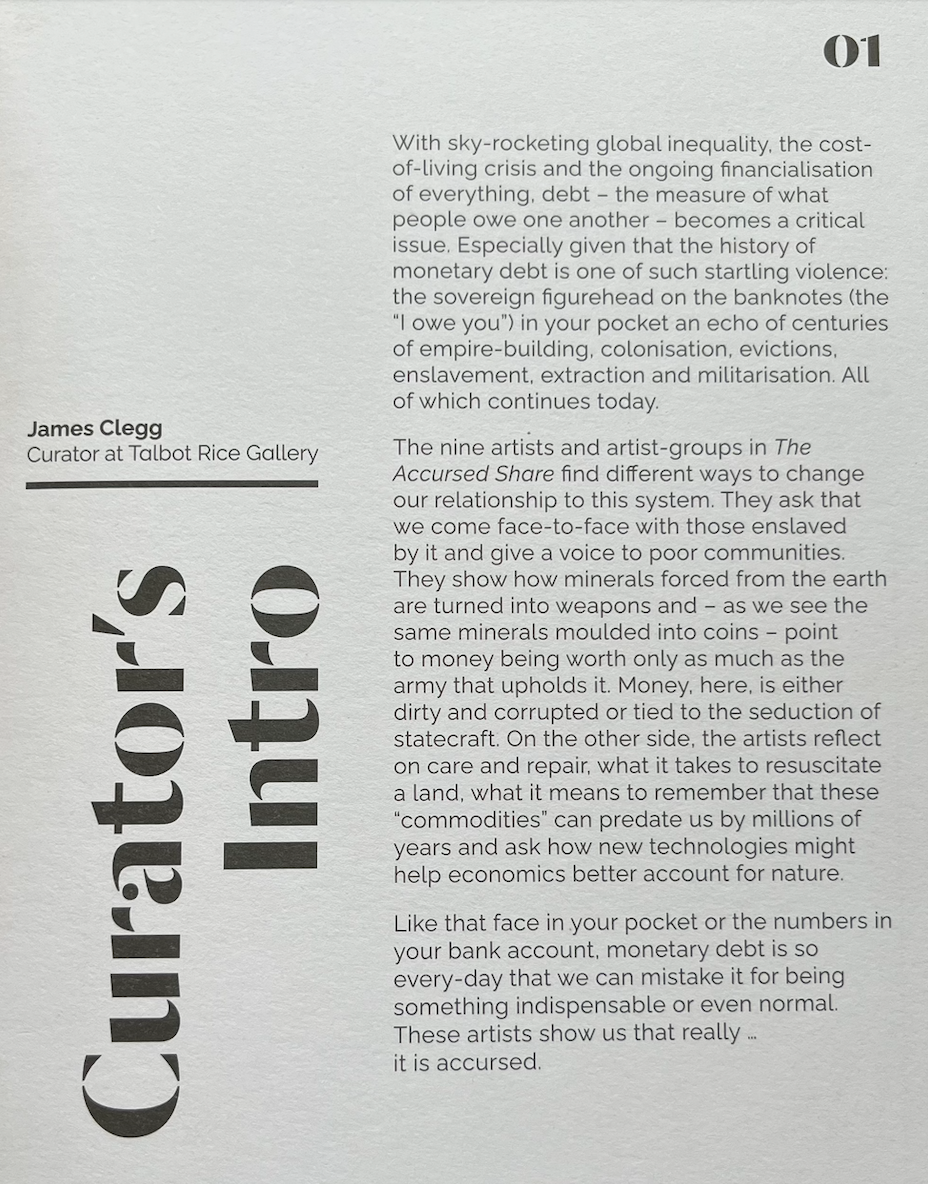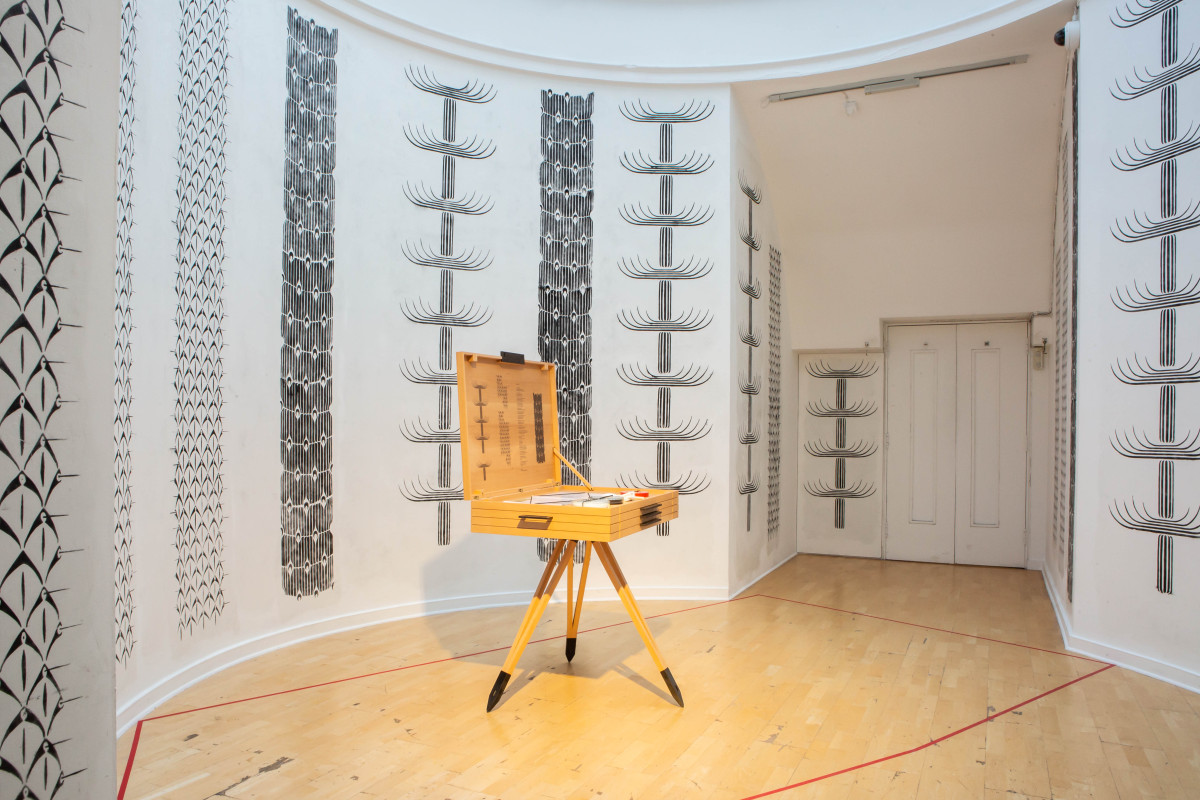This week, we had the opportunity to visit the new exhibition “The Accursed Share” at the Talbot Rice Gallery with curator James Clegg. Compared to my previous visit, where I mainly focused on observing how the curator arranged different artworks in various environments, this time I found myself more fascinated by the interconnectedness among the artworks themselves. The entire exhibition is centered around the theme of “debt” and features numerous relevant art pieces. Perhaps by referring to the guidebook of the exhibition, we can gain insight into the curator’s underlying thoughts. Therefore, my main focus in this blog will be on analyzing the introductory text of the exhibition in order to gain a deeper understanding of the curator’s perspective. Additionally, I aim to provide insights and inspiration for my own exhibition writing.

The introduction contained three paragraph, about 250 words. The first paragraph sets the context for the exhibition by highlighting the importance of debt. It mentions the historical violence associated with monetary debt, including empire building, colonization, enslavement, extraction, and militarization. The paragraph suggests that the artwork in the exhibition will relate to those topics.
The second paragraph provides a more detailed description of what visitors can expect to see in the exhibition. It summarises the purpose of these artists’ work is to change our relationship with debt system. Some artists’ work are described as highlighting the violent history of monetary debt, and others reflect on care and repair. It shows that this exhibition not only aims to expose the disappointed side of sovereigns and civilizations, but also shows the dignity of those trying to care, to live sustainably, and to forge other values. That is also what I want to highlight in my exhibition: although we can see some complex and tricky social issues young people are facing in China from these films, many artists still try their best to show their voices through artistic approaches.


The third and final paragraph of the text draws attention to the everyday nature of monetary debt. This final paragraph serves to reinforce the theme of the exhibition and to encourage the reader to engage with the works on display.
I also found that at the end of this brochure, there is a longer and more academic text explaining the origin of its name “The Accursed Share” in detail, leading to further thoughts and discussion around this topic.
Overall, the text follows a clear and effective structure. The language is clear and accessible, and the ideas are presented in a logical and coherent way. Therefore, when I write for my exhibition, I will try to set up the context of the exhibition in the first paragraph to help the audience know what are these works about at the beginning. Then the second paragraph describes the focus of the exhibition and a brief introduction of each work’s topic, and the third paragraph offers a summary and encourages engagement.

